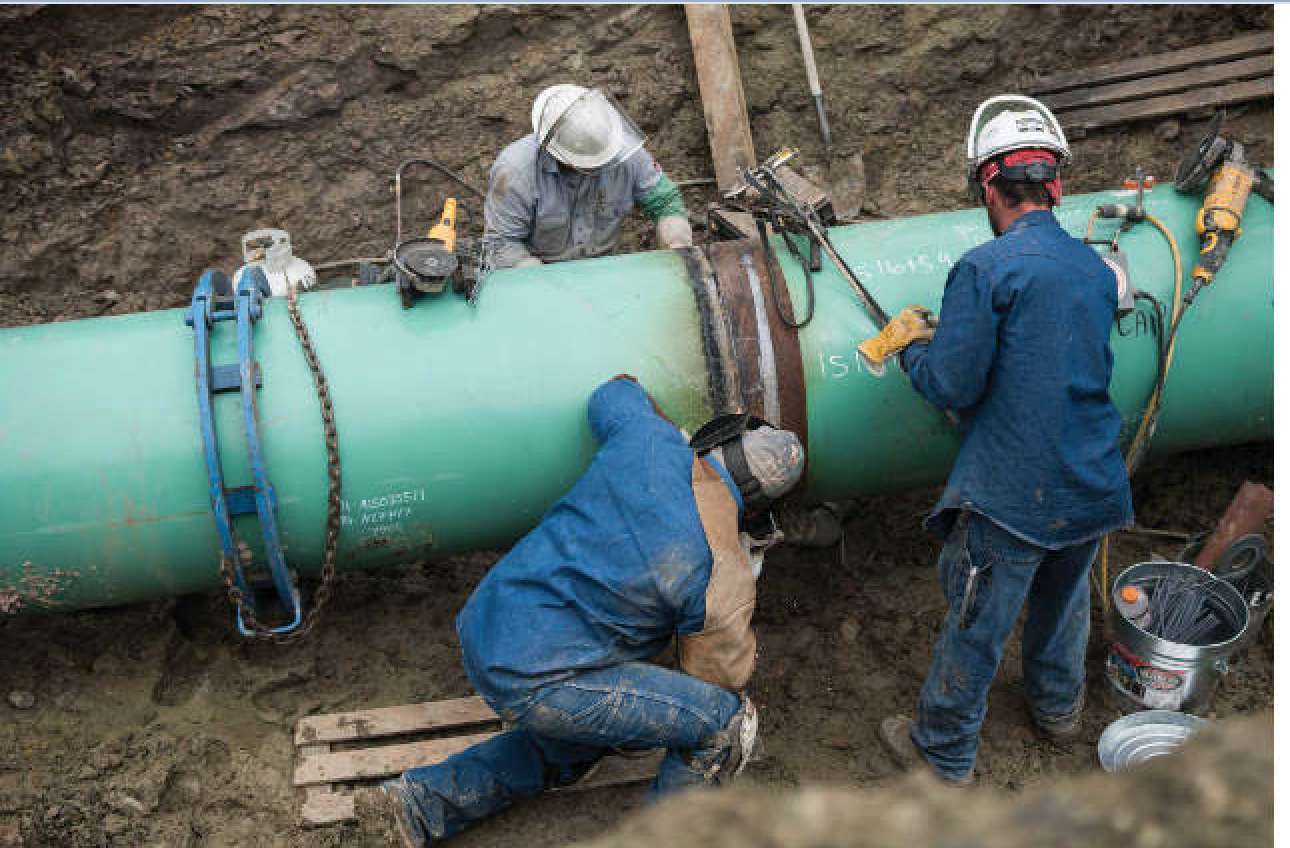February 2018, Vol. 245, No. 2
Features
The View from the Bakken: Looking Back at 2017 in Oil

Oil prices held steady in 2017, and the Bakken oil and gas industry hunkered down to find ways to make oil and gas wells economic in the lower price environment.
Meanwhile, the elimination of the oil export ban helped Bakken crude find new markets, and Dakota Access helped it access better markets, increasing profit margins and helping North Dakota state funds. Below a timeline of the year in oil.
January – Oil production started the year below the 1 MMbpd mark at 980,294 bpd. That was a 4% bump over December’s production, adding 38,000 bpd. At that time, President Trump issued an executive order inviting TransCanada to resubmit Keystone XL’s application and directing that the Dakota Access permit be expedited, even as protesters of the latter attempted to take higher ground and open a new camp in the area of the disputed Lake Oahe crossing.
February – Production bounced over the 1 MMbpd mark, rising by 53,000 barrels to 1.03 MMbpd. North Dakota would hang onto that psychological milestone the rest of the year, despite predictions it would soon fall below that mark.
The Dakota Access protest camps were closed, ahead of spring flooding, which, while not record-setting, were still higher than usual. Protest and legal activity, however, continued, even as the acting secretary of the Army directed the Army Corps of Engineers to issue the pipeline’s last remaining easement. The company resumed construction immediately upon receiving its easement.
March – Production was down slightly to 1.02 MMbpd. Members of the Standing Rock Sioux and other tribes organized a protest against Dakota Access in Washington D.C.
April – Gas production hit a new record at 1.83 Bcf/d, while oil production increased slightly to 1.05 MMbpd. The statistic reflected that drilling moved into the core of the Bakken, where there is more gas. Exports of oil continued to set new records. China surpassed Canada’s purchases for the first time.
May – Oil hovered at just over 1 MMbpd, continuing to defy all predictions that it would soon drop below that level. Two Dakota Access leaks were reported in national media, but it turned out that one was for a line owned by a different company, and the other was part of testing that occurred before the line before went into operation. The 84-gallon spill was completely contained on site.
June – Production increased slightly to 1.03 MMbpd. A federal court ruled Dakota Access lacked key elements to its analysis and ordered those specifics be included in studies to date. Oil began flowing in the Dakota Access pipeline.
July – Another slight increase was recorded in oil production to 1.05 MMbpd. This put state revenues 5-6% above forecast, despite prices remaining 9% below predictions. Meanwhile, Facebook founder Mark Zuckerberg visited an Oasis Petroleum oil rig in Williston, ND.
August – Production hit 1.09 MMbpd, continuing a slow but steady climb upward. North Dakota succeeded in getting $10 million in federal money for costs related to the pipeline protests.
September – A new production milestone was hit, with oil hitting 1.11 MMbpd. It was the first time since March 2016 that oil production exceeded 1.1 million. Gas, too, was up, hitting 1.94 Bcf. At this point, revenue was 17 percent ahead of projections, even as prices were still 2% below forecast.
October – Oil production rose to 1.18 MMbpd, but gas production was down for the first time. This reflected companies extending operations outside the core, as new economics and efficiencies allowed.
Continental Resources announced the sale of 1 MMbpd to China, and the U.S. Army Corps of Engineers requested more time to complete the court-ordered study for Dakota Access.
November – OPEC and Russia agreed to extend production cuts until the end of 2018.
December – Continental Oil announced the sale of another 450,000 barrels of Bakken crude to international markets, part of a record-setting year for exports. The Energy Information Administration (EIA) predicted continued increases to shale production.
Crude futures took no great leaps up or down, reflecting that OPEC production cuts would likely be filled in with shale production. A report from researchers at Energy in Depth said methane emissions declined by 10.8 million metric tons of CO-2 equivalent from 2011 to 2016. New tax laws passed in December will decrease the tax obligations that many oil and gas companies, particularly midstream, face, from 35% to 21% in the 2018 tax year. These new laws also allow the full expensing of selected plant and equipment over a five-year period, a measure aimed at spurring development and new jobs. P&GJ
Renée Jean is the oil editor at Williston N.D. Herald, the publication in which this article originally appeared. She can be reached at Renrjean@willistonherald.com.





Comments